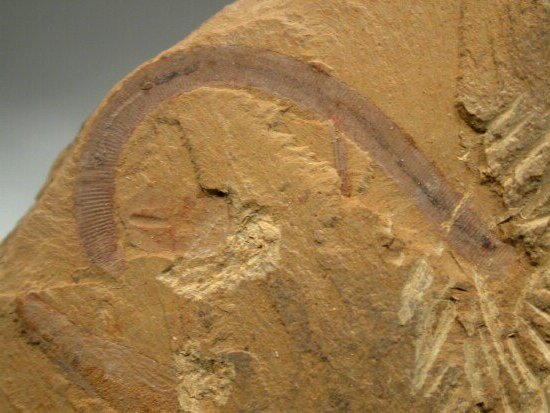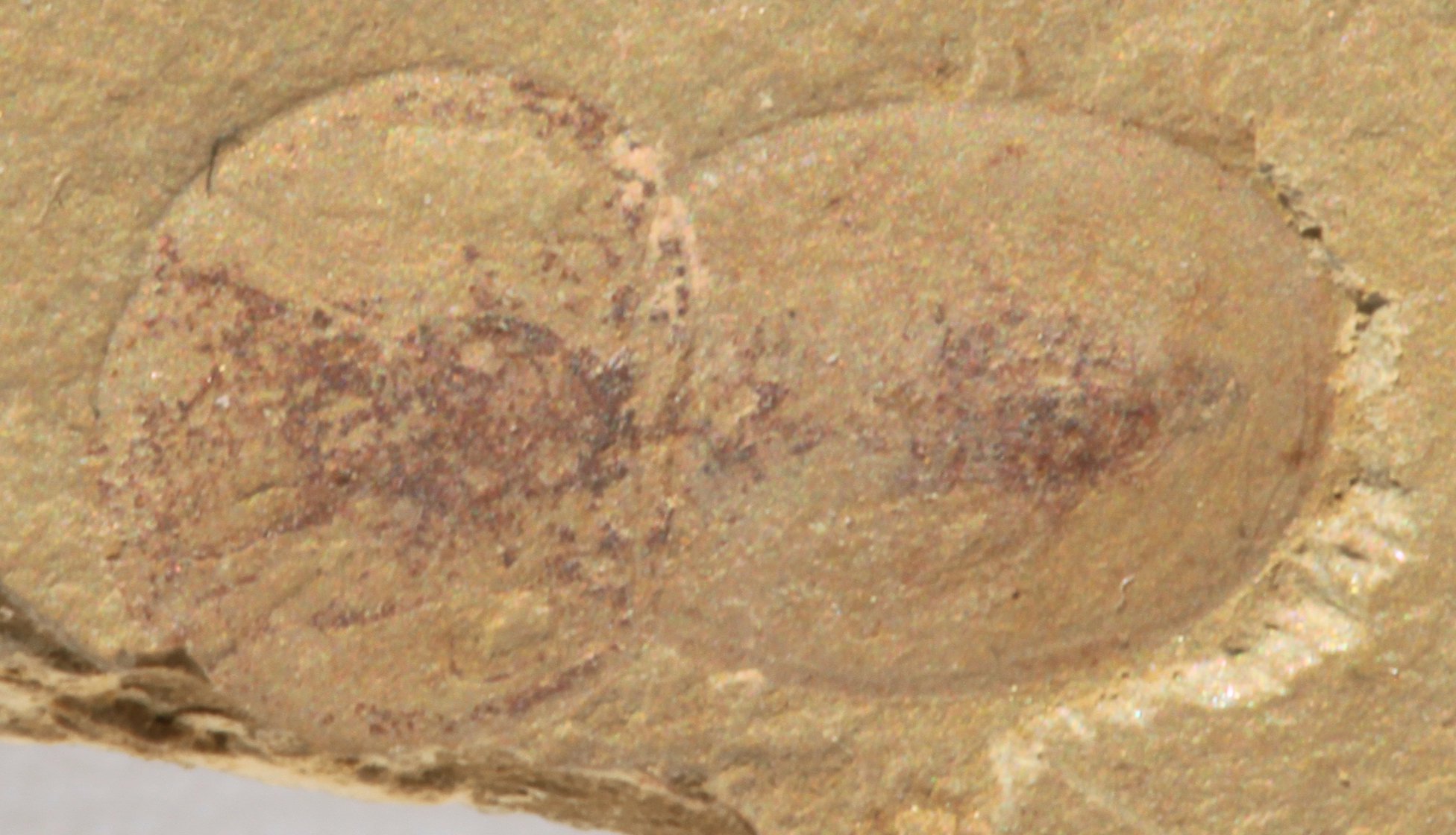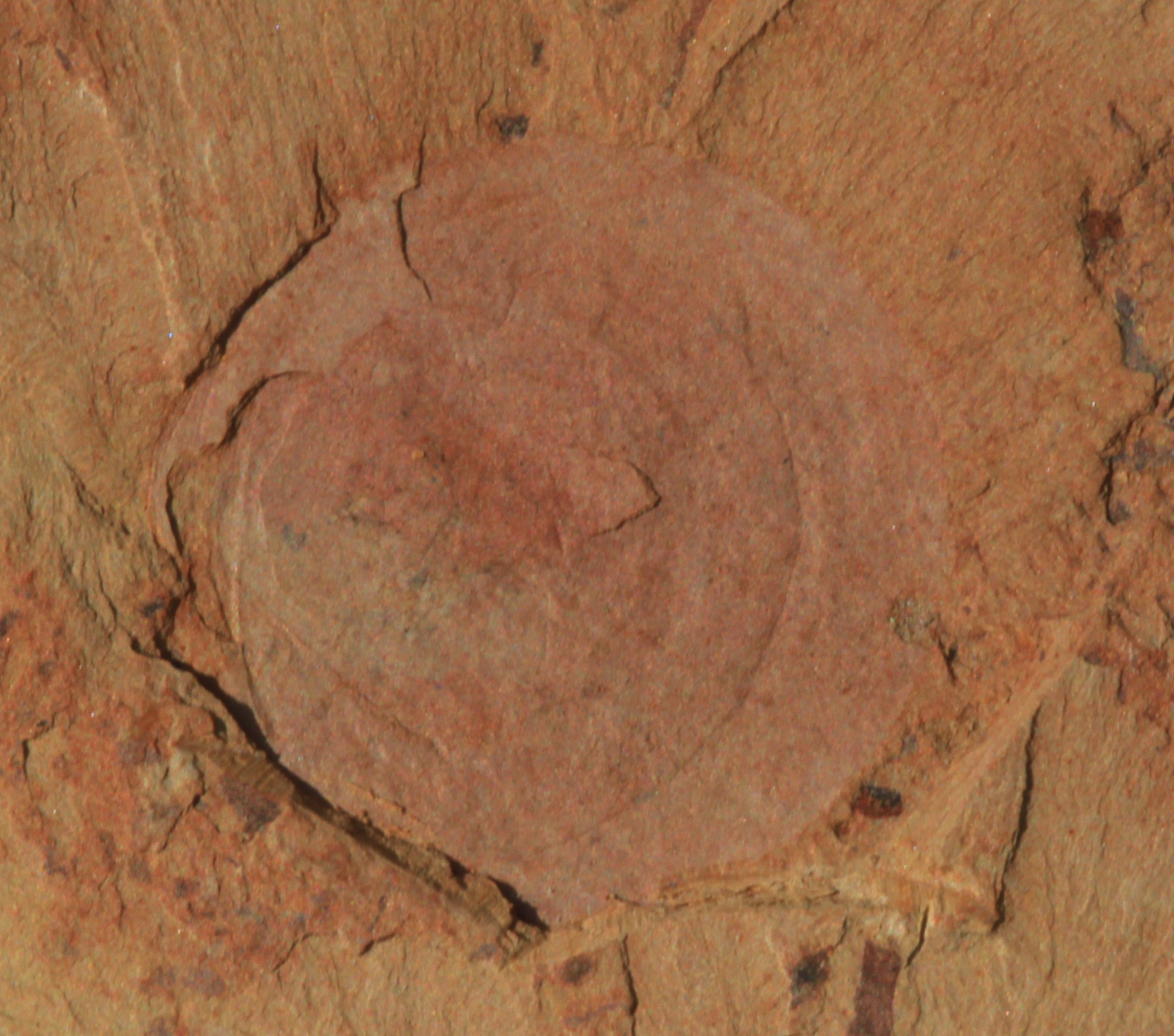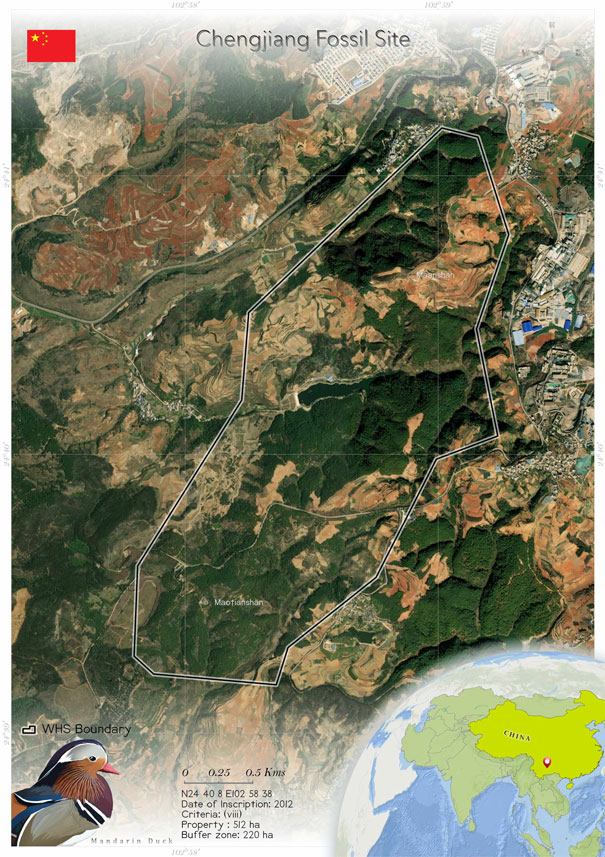
Chengjiang Fossil Site (1388)
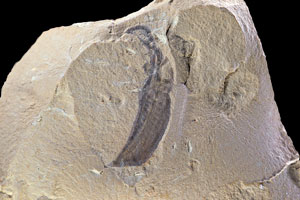 A heaven for palaeobiologists and geologists, the Chengjiang Fossil Site documents the marine ecosystem of the early Cambrian Era in the Yunnan Province of China. The site has a rich diversity of early Cambrian species, with at least 16 phyla documented. The preserved fossils are exquisite, and the quality is high as both the hard and soft tissues, sometimes entire soft bodied animals, have been perfectly preserved. The property is very well managed and protected by the site administration. Mining and quarrying of phosphate was an issue until 2004, and the administration was successful in completely halting the process by 2008. Excavation of fossils requires construction of walkways that damage the property. A museum was built at the first fossil site, creating a series of concerns for the administration. However, the administration has introduced a plan that will not only systematically review the proposed construction but will also approve or disapprove it on the basis of the reviews.
A heaven for palaeobiologists and geologists, the Chengjiang Fossil Site documents the marine ecosystem of the early Cambrian Era in the Yunnan Province of China. The site has a rich diversity of early Cambrian species, with at least 16 phyla documented. The preserved fossils are exquisite, and the quality is high as both the hard and soft tissues, sometimes entire soft bodied animals, have been perfectly preserved. The property is very well managed and protected by the site administration. Mining and quarrying of phosphate was an issue until 2004, and the administration was successful in completely halting the process by 2008. Excavation of fossils requires construction of walkways that damage the property. A museum was built at the first fossil site, creating a series of concerns for the administration. However, the administration has introduced a plan that will not only systematically review the proposed construction but will also approve or disapprove it on the basis of the reviews.
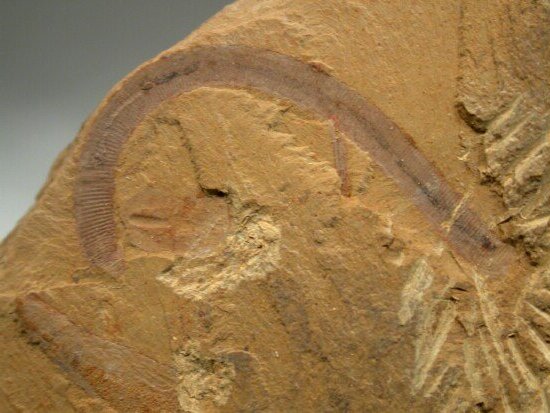 The Chengjiang Fossil Site is a small (512 ha) property located in Yunnan Province, China. The geographical coordinates of the site are 24° 40' 08" N, 102° 58' 38" E. The site has fossil remains that document the early establishment of a marine ecosystem. The rocks and fossils illustrate the rapid diversification of life on Earth during the early Cambrian Period. Almost all the major invertebrate and vertebrate groups originated during this diversification (UNESCO 2012). The property is of palaeobiological as well as geological value, given that fossils of at least 16 phyla, more than 170 genera and around 200 species have been recorded from the heritage site. Chengjiang is one of the critical fossil sites as the fossils documented here have their hard and soft tissues preserved exceptionally till now. The property is an archive of an early complex marine system and facilitates researchers to understand the structure of communities from the early Cambrian Period. Ouet al. (2011) recorded the presence of a rare onychophoran-like lobopodian from the Chengjiang Fossil Site. Zhang et al. (2011) documented the presence of an Obolellate Brachiopoda from the early Cambrian Period whose soft tissues were very well preserved.
The spatial variation in the fossil preservation, taxonomic diversity and faunal composition of Chengjiang has an extremely high-resolution characterization. The biota of local and regional spatial scales within the property may be used to analyse the roles of ecology, environmental factors and taphonomy in determining species diversity (Zhao et al. 2012). Liu et al. (2015) showed how microtomography (micro-CT) can be used to reveal the structures of a slab without even damaging it. Unlike the early techniques, in which relatively less significant structures were destroyed in order to study the more significant ones, specimens are preserved. They proposed that micro-CT might be an important tool for studying the three-dimensional structure of a preserved specimen without damaging any part of it. The property experiences two seasons: the dry season (November– April) and the wet season (May–October). 80% of the annual rainfall is received during the wet season, with the annual precipitation being around 964 mm.
The Chengjiang Fossil Site is a small (512 ha) property located in Yunnan Province, China. The geographical coordinates of the site are 24° 40' 08" N, 102° 58' 38" E. The site has fossil remains that document the early establishment of a marine ecosystem. The rocks and fossils illustrate the rapid diversification of life on Earth during the early Cambrian Period. Almost all the major invertebrate and vertebrate groups originated during this diversification (UNESCO 2012). The property is of palaeobiological as well as geological value, given that fossils of at least 16 phyla, more than 170 genera and around 200 species have been recorded from the heritage site. Chengjiang is one of the critical fossil sites as the fossils documented here have their hard and soft tissues preserved exceptionally till now. The property is an archive of an early complex marine system and facilitates researchers to understand the structure of communities from the early Cambrian Period. Ouet al. (2011) recorded the presence of a rare onychophoran-like lobopodian from the Chengjiang Fossil Site. Zhang et al. (2011) documented the presence of an Obolellate Brachiopoda from the early Cambrian Period whose soft tissues were very well preserved.
The spatial variation in the fossil preservation, taxonomic diversity and faunal composition of Chengjiang has an extremely high-resolution characterization. The biota of local and regional spatial scales within the property may be used to analyse the roles of ecology, environmental factors and taphonomy in determining species diversity (Zhao et al. 2012). Liu et al. (2015) showed how microtomography (micro-CT) can be used to reveal the structures of a slab without even damaging it. Unlike the early techniques, in which relatively less significant structures were destroyed in order to study the more significant ones, specimens are preserved. They proposed that micro-CT might be an important tool for studying the three-dimensional structure of a preserved specimen without damaging any part of it. The property experiences two seasons: the dry season (November– April) and the wet season (May–October). 80% of the annual rainfall is received during the wet season, with the annual precipitation being around 964 mm.
Criterion (viii)
The Chengjiang Fossil Site presents an exceptional record of the rapid diversification of life on Earth during the early Cambrian period, 530 million years before present. In this geologically short interval almost all major groups of animals had their origins. The property is a globally outstanding example of a major stage in the history of life, representing a palaeobiological window of great significance. The exceptional palaeontological evidence of the Chengjiang Fossil Site is unrivalled for its rich species diversity. To date at least 16 phyla, plus a variety of enigmatic groups, and about 196 species have been documented. Taxa recovered range from algae, through sponges and cnidarians to numerous bilaterian phyla, including the earliest known chordates. The earliest known specimens of several phyla such as cnidarians, ctenophores, priapulids, and vertebrates occur here. Many of the taxa represent the stem groups to extant phyla and throw light on characteristics that distinguish major taxonomic groups. The property displays excellent quality of fossil preservation including the soft and hard tissues of animals with hard skeletons, along with a wide array of organisms that were entirely soft-bodied, and therefore relatively unrepresented in the fossil record. Almost all of the soft-bodied species are unknown elsewhere. Fine-scale detailed preservation includes features as the alimentary systems of animals, for example of the arthropod Naraoia, and the delicate gills of the enigmatic Yunnanozoon. The sediments of Chengjiang provide what are currently the oldest known fossil chordates, the phylum to which all vertebrates belong. The fossils and rocks of the Chengjiang Fossil Site, together, present a complete record of an early Cambrian marine community. It is one of the earliest records of a complex marine ecosystem, with food webs capped by sophisticated predators.
Status
The Chengjiang biota are evolutionarily significant. They helped us understand the history of life. The property proved to be an asset in understanding the ‘‘Cambrian explosion” (Gabbott et al. 2004). The preservation mechanism and the range of preserved tissue found at the heritage site were impressive (Xian- Guang et al. 2017). According to Zhu et al. (2005), the non-mineralized organisms of Chengjiang have been preserved by the process called pyritization, and Ferich aluminosilicates that precipitate after pyritization also played a significant role in the preservation of the Chengjiang biota. T he Chengjiang Fossil Site is within another protected area, a Chinese national geopark, and there is no permanent human settlement within the property. However, an increase in the number of visitors (4000–5000) was anticipated in 2012, and the maximum number of tourists anticipated at the time of inscription was c. 30,000–40,000 (Decision 2012). Overall, the management plan is extremely effective, and the staff of the property are dedicated to the protection, management and conservation of the heritage site. A few fossil records have also been documented from outside the property and its buffer zone. The 2020 IUCN World Heritage Outlook (Chengjiang Fossil Site | World Heritage Outlook (iucn.org)) assessment of the fossil site identified that the outlook of the property still remains good overall due to a very effective administration and management plan. The newly constructed Natural Museum of Chengjiang Fossil Site boosted the value of the property. The analysis shows that overall, the property is well protected and managed by the administration. And the inscription of the site in the UNESCO World Heritage List has aided in the conservation and management on a global platform.
